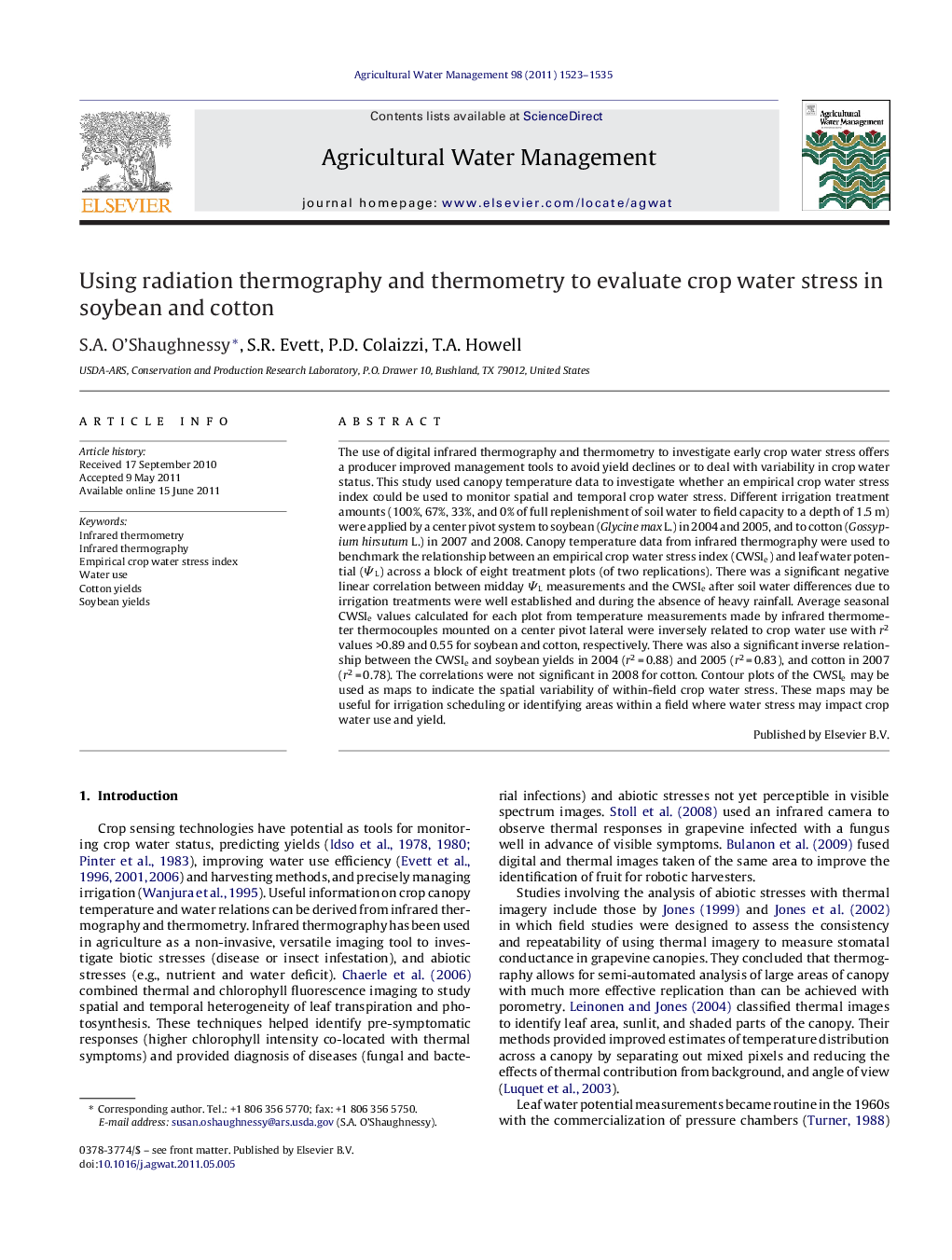| کد مقاله | کد نشریه | سال انتشار | مقاله انگلیسی | نسخه تمام متن |
|---|---|---|---|---|
| 4479325 | 1316437 | 2011 | 13 صفحه PDF | دانلود رایگان |

The use of digital infrared thermography and thermometry to investigate early crop water stress offers a producer improved management tools to avoid yield declines or to deal with variability in crop water status. This study used canopy temperature data to investigate whether an empirical crop water stress index could be used to monitor spatial and temporal crop water stress. Different irrigation treatment amounts (100%, 67%, 33%, and 0% of full replenishment of soil water to field capacity to a depth of 1.5 m) were applied by a center pivot system to soybean (Glycine max L.) in 2004 and 2005, and to cotton (Gossypium hirsutum L.) in 2007 and 2008. Canopy temperature data from infrared thermography were used to benchmark the relationship between an empirical crop water stress index (CWSIe) and leaf water potential (ΨL) across a block of eight treatment plots (of two replications). There was a significant negative linear correlation between midday ΨL measurements and the CWSIe after soil water differences due to irrigation treatments were well established and during the absence of heavy rainfall. Average seasonal CWSIe values calculated for each plot from temperature measurements made by infrared thermometer thermocouples mounted on a center pivot lateral were inversely related to crop water use with r2 values >0.89 and 0.55 for soybean and cotton, respectively. There was also a significant inverse relationship between the CWSIe and soybean yields in 2004 (r2 = 0.88) and 2005 (r2 = 0.83), and cotton in 2007 (r2 = 0.78). The correlations were not significant in 2008 for cotton. Contour plots of the CWSIe may be used as maps to indicate the spatial variability of within-field crop water stress. These maps may be useful for irrigation scheduling or identifying areas within a field where water stress may impact crop water use and yield.
► In this study we demonstrate how an empirical crop water stress index was related to in situ stress measurements.
► Average seasonal empirical CWSI values were inversely related to crop water use and crop yield.
► Contour plots of the average seasonal CWSI can be used to map spatial variability of within-field crop water stress.
Journal: Agricultural Water Management - Volume 98, Issue 10, August 2011, Pages 1523–1535